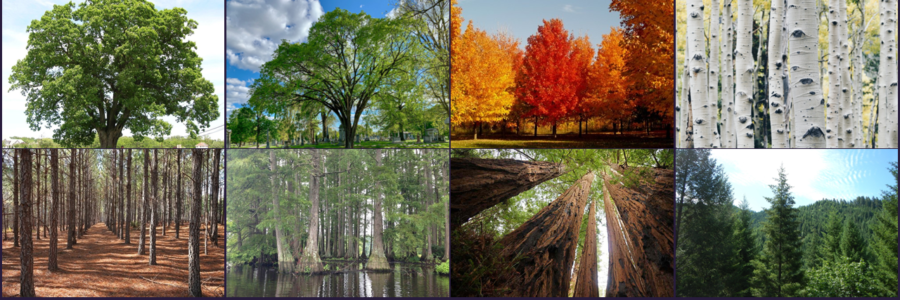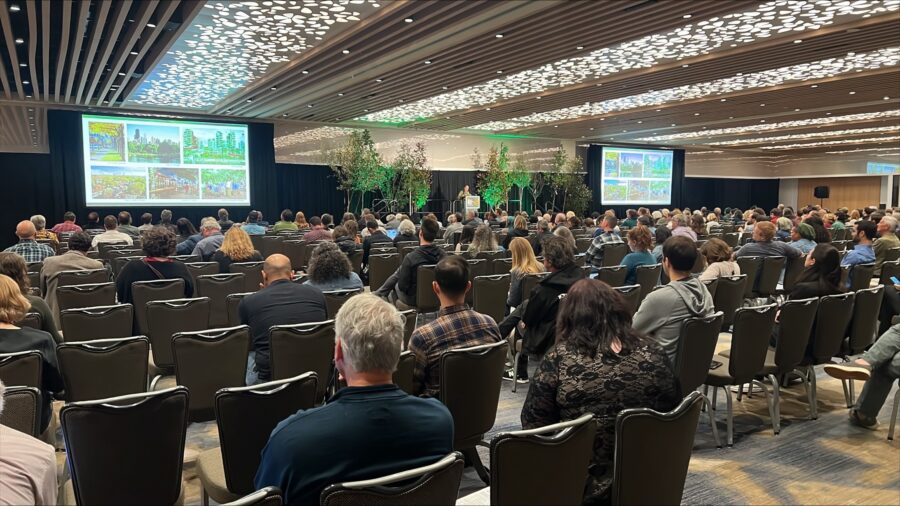Written by: Jordan Wildish
Carbon markets have funded the conservation, restoration, and growth of millions of acres of forest in North America. While fire has always been a natural part of these forest ecosystems, climate change has caused these fires to be more severe, frequent, and dangerous. In fact, the top five years with the largest acreage in burned in the US since 1960 have all occurred since after 2006, and 2021 is on track to be another massive year for wildfires. Across the US, increasingly severe and unpredictable wildfires are threatening forests, and forests enrolled in the carbon market are no exception. Many forest carbon projects have been impacted by wildfire in recent years. Just this year, the Bootleg fire has burned a part of a large forest carbon offset project in Oregon, developed by the Green Diamond Resource Company. There are also active wildfires impacting a forest carbon project on the Colville Indian Reservation, and threatening several other projects across the west.
Despite the growing risk of wildfire, carbon finance remains an effective tool to fund the restoration, conservation, and sustainable management of forests. Forest carbon markets are designed with an insurance mechanism in place — called a “buffer pool” — created with exactly this challenge in mind. When a forest carbon project is developed and registered with any of the major 3rd party registries in the US a percentage of the offsets issued to the project are put in a “buffer pool” from which they cannot be sold. For projects registered with the Climate Action Reserve and the American Carbon Registry — the two largest forest carbon project registries in the US — about 18% of credits issued to forest projects are placed in this buffer pool. When a forest experiences an unplanned loss of carbon storage or sequestration capacity — due to fire, drought, disease, or intentional removals — the credits in this shared buffer pool are used to compensate for the lost carbon.
Every time new credits are issued by a registry, more offsets are added to the buffer pool. The American Carbon Registry — which has registered more than 100 million forest carbon credits to US projects — reports that the cumulative balance of credits in their buffer pool continues to grow year over year, despite recent fires.

The balance of credits in the largest US forest project registry — the American Carbon Registry — has remained positive, and has even grown in recent years, deposit credit cancellation due to carbon loss from wildfire. More than 10 million credits currently sit in this buffer pool — providing “insurance” for carbon credits in the event of a wildfire or other carbon loss.
While climate change poses a threat to forests globally, we know that there are critical actions that forest managers can take to mitigate the risk of severe wildfires and help restore forests to their native condition after fires. The role of fuel treatments — like prescribed fire and thinning — in mitigating severe wildfire is clear. Research has shown that managing forests by removing brushy understory and thinning dense groves significantly reduces fire severity as well as losses of carbon stocks due to wildfire.
In the Bootleg fire (which has already burned more than 647 square miles of forest) scientists reported that areas where fire risk reduction work had been implemented were much less severely impacted by the fire than areas where fire risk reduction treatments had not been applied. Prescribed burning and thinning is costly to implement, especially at the scale need to protect our forests in the face of increasingly extreme weather. Carbon markets have emerged as an important mechanism to fund this critical fire risk reduction work. The Nisqually Land Trust, in collaboration with the Nisqually Indian Tribe, has used carbon finance to fund the acquisition and management of more than 8,000 acres of forest — converting these forests from densely packed and fire-prone timberlands to healthy forests that support biodiversity and downstream salmon habitat.
Carbon finance can play a role not just in preparing forests to withstand wildfires, but also in helping forests recover after a fire swept through. The US Forest Service (USFS) estimates that more than 1.3 million acres are in need of reforestation on national forest land alone — much of this due to damage from wildfire. Without ecologically informed replanting many of these areas will become overrun with invasive species, or not grow back into forests at all. Here, too, carbon finance can play a critical role. In northern California, a partnership between RenewWest and Collins is in the process of replanting more 2 million trees across 10,000 acres of land that was burned in the 2012 Barry Point Fire. This reforestation work is funded through the sale of the carbon credits generated from the project. In Washington state, the Climate Trust has worked with the Yakama Nation to replant western larch and ponderosa pine across more than 4,000 acres that burned in a 2015 fire.
Carbon finance can play an important role in protecting forests for increasingly severe wildfires, and restoring forests after wildfire damage — and the carbon market continues to evolve in response to this need. The Climate Action Reserve is working with the California Department of Forestry and Fire Protection, and the California Climate Investments Fund to create an “Avoided Wildfire Emissions” Methodology. This new methodology would allow forest owners to receive carbon credits for managing forests in such a way that reduces the risk of high-intensity wildfire — such as thinning dense areas and using prescribed fire to remove highly flammable brush.
Carbon finance is just one piece of the puzzle to protect our forests from increasingly severe wildfire. At this critical moment for our forests and our climate, we need to pull every lever and use every tool at our disposal to drive impactful change. Carbon finance has already proved to be one essential tool towards a greener future.



